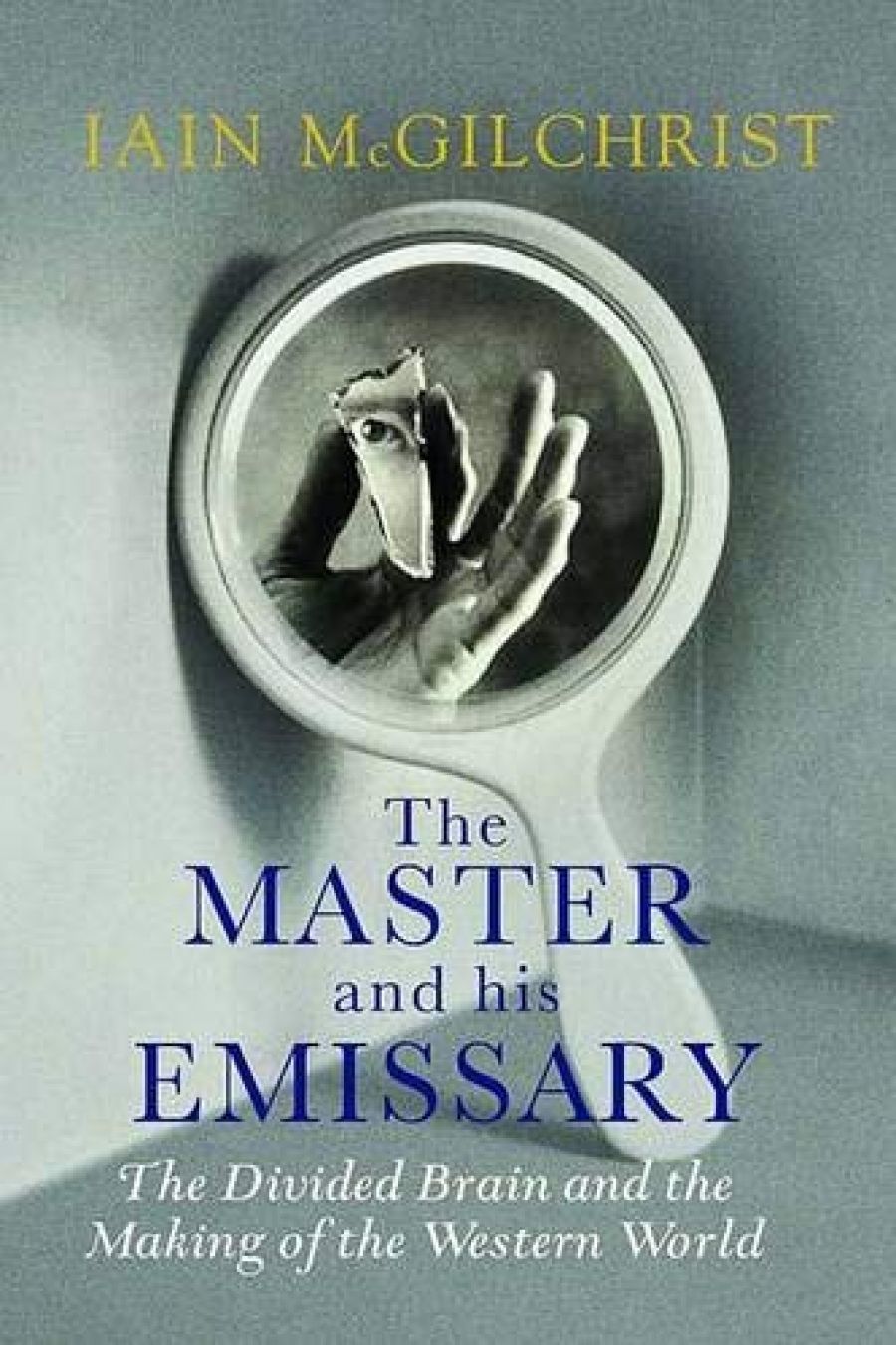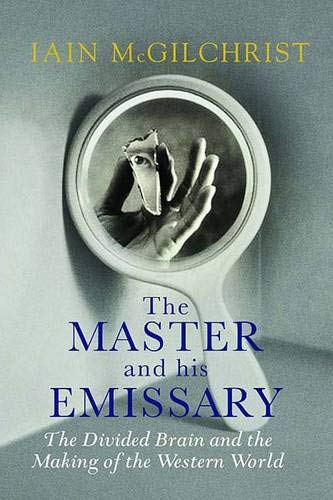
- Free Article: No
- Contents Category: Non-fiction
- Review Article: Yes
- Article Title: Hemispheric wars
- Online Only: No
- Custom Highlight Text:
What would it be like to possess two brains, each with its own view of the world and each with its own personality? Which one would be in control? Which one would be ‘you’? Of course, none of us literally has two brains. Yet we have two cerebral hemispheres, a right and a left, that in many important respects are duplicates of each other. Normally, the right and left hemispheres communicate extensively with each other, mostly via a large fibre tract known as the corpus callosum. Despite overall similarities in their organisation, there are marked left–right asymmetries in the details of how the hemispheres operate. Compelling evidence for brain asymmetry initially came from two groups of patients: those who have had a stroke affecting just one hemisphere; and those, the so-called ‘split-brain’ patients, who lack a functional corpus callosum connecting the two hemispheres, either because of a congenital defect, or as a result of surgery to ameliorate otherwise intractable epilepsy.
- Book 1 Title: The Master and His Emissary
- Book 1 Subtitle: The Divided Brain and the Making of the Western World
- Book 1 Biblio: Yale University Press (Inbooks), $64.95 hb, 608 pp
- Book 1 Cover Small (400 x 600):

Remarkably, split-brain patients show few outward signs of their condition. Indeed, they report no sense of having a ‘split-self’. Only careful experimentation under controlled conditions can reveal what has gone awry. Conversely, patients with a stroke affecting only one hemisphere usually show major functional impairments: they may lose ability to control one side of their body (the opposite side to the stroke), they may lose speech (if the stroke is on the left side), or they may fail to recognise part of their body as their own (if the stroke is on the right side). Modern brain imaging confirms that many cognitive tasks are distributed differentially on one side or the other of the brain. Yet we are largely unaware of this level of organisation underlying most of our thoughts and actions.
In his new book, Iain McGilchrist has undertaken the mammoth task of reviewing the capabilities of the left and right sides of the brain, and then applying his conclusions to a reinterpretation of the cultural history of the Western world. As a former English lecturer at Oxford and a senior psychiatrist at a major London hospital, McGilchrist is highly qualified to attempt this synthesis. The level of scholarship in the book is impressive, with more than 120 pages of detailed notes and bibliography. Moreover, Mc-Gilchrist writes well, with a direct engaging style, so that a reader with no background in neuroscience could easily follow his descriptions of brain function. It is not surprising that The Master and His Emissary already has received many strongly positive reviews.
The central idea of McGilchrist’s thesis is that our divided brains provide us with ‘two fundamentally opposed realities’ that need to cooperate, but ‘are in fact involved in a sort of power struggle [that] explains many aspects of contemporary Western culture’. Let me emphasise, as does McGilchrist, that this is not the popularist view of ‘left brain–right brain’ behaviour, which simplistically posits that analytical thought is generated on the left side, whilst the right side relaxes in a dreamy world of art and metaphor. Nevertheless, cognitive processing within the left hemisphere generally takes a finer grained view of the world compared with the longer term or larger scale view taken by corresponding areas on the right side.
McGilchrist extends this observation much further to argue that the right hemisphere is the overall controller of cognitive activity (the Master in his enigmatic title, taken from a story by Nietzsche). Consequently, the left side of the brain, with its short-term out-look (the Emissary), should be subordinate to the right. However, since only the left side has the power of speech generation and language-based logic, it has come to dominate modern Western thought with its emphasis on reductionist or abstractionist intellectualism at the expense of a more holistic, humanistic approach. McGilchrist sees this as an undesirable state of affairs, and I am sure many would agree with this conclusion. Nevertheless, I became progressively uneasy with his argument as it developed.
McGilchrist persists in treating the functions of the right and left sides of the brain as though they are individuals with radically different personalities in a constant state of conflict about who will do what and when. Despite his protestations that this is simply a rhetorical device to advance his case, it permeates the second half of the book, in which he argues that, at various times in Western history, one side or the other of the brain has dominated a whole cultural domain. Of course, different worldviews, with their characteristic thought patterns, dominate particular cultures at particular times. But it seems a major over-interpretation of what we know about cognitive function to claim that these differences have been generated by one side of the brain somehow taking command (see The Asymmetric Brain, edited by Kenneth Hugdahl and Richard Davison, 2003, for the neuroscience). The critical point here is that any coherent thought pattern requires the whole brain to be functioning properly, not just one side or the other. In his final paragraph, McGilchrist gives himself a huge escape clause: maybe everything he argues is ‘just a metaphor’. But he doesn’t mind (‘I will be content’), since metaphor is primarily generated and understood by his masterful right hemisphere.
Towards the end of his book, McGilchrist touches on the idea of embodied knowledge: that is, things we know about the world via interactions with our bodies, especially our hands. He implicitly considers knowledge as primarily language based, the generation and expression of which shows strong hemispherical asymmetry. Yet at least as much of the brain is involved in recognising, processing and storing knowledge of the spatial properties of objects in the world. This information, most of which we cannot describe verbally, is essential for knowing how to manipulate the tens of thousands of objects we encounter in our lives. Although he places much weight on the asymmetric body-views held by each parietal cortex (beautifully described in Phantoms of the Brain, by V.S. Ramachandran and Sandra Blakeslee, 1998), it is not obvious how McGilchrist’s interpretation of right–left hemispheric interactions applies to this vast area of non-verbal human understanding.
By the time we get to the book’s final chapter, it has become apparent that McGilchrist has a jaundiced, somewhat stereotypical, view of science. He largely overlooks the creative and interpretative aspects of much scientific discovery, and focuses on reductionism as ‘an inescapable consequence of a purely left-hemisphere vision of the world’.
McGilchrist also reveals a profound antipathy of modernism in the arts. He tries to link, disingenuously, in my view, the rise of modernism with increased rates of schizophrenia, both supposedly having evolved from the subversive influence of the left-hemisphere world view and its underlying lack of large-scale coherence. Thus, modernist authors such as Alain Robbe-Grillet and Samuel Beckett empty ‘human action and intention’ of meaning, just as ‘schizophrenics describe an emptying out of meaning’. He continues with a simplistic argument linking modernism and Nazism: ‘art for art’s sake ... is part of a much more profound failure of compassion and an erosion of pity.’
Twentieth-century music is similarly ridden with discordant angst, ‘alien, minatory’, and ‘the emotional range is inevitably reduced’. Nevertheless, McGilchrist concedes that there has been some great modern poetry and some ‘hauntingly beautiful music that is intuitively, rather than purely theoretically, grounded, expressive rather than rationalistic’. Modern jazz also hits a sweet spot with him, although I expect that the improvised sonic collages of the Art Ensemble of Chicago or the walls of sound from early 1970s Miles Davis would severely push McGilchrist’s ‘bounds of the perceptible’.
Ultimately, McGilchrist’s book becomes a plea for tolerance and inclusivity, something he would say relies on handing authority back to the right hemisphere. In doing so, he displays an undeniable yearning for the ideals of Romanticism, while accepting that our brains ‘reflect ... the nature of the universe in which they have come about’. McGilchrist shares with Wittgenstein the ‘mistrust of deceptively clear models’. I, too, have this distrust. This is a very good book, both informative and erudite, but its single-mindedness in forcing so much of our cultural history into a single overarching ‘deceptively clear’ framework prevents it from being a great one.


Comments powered by CComment